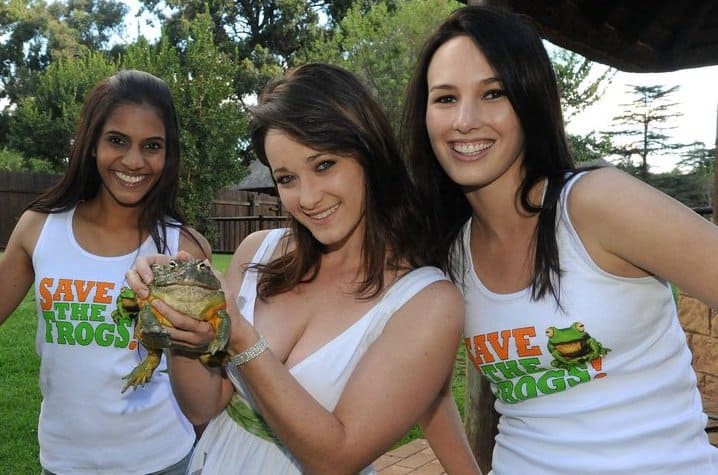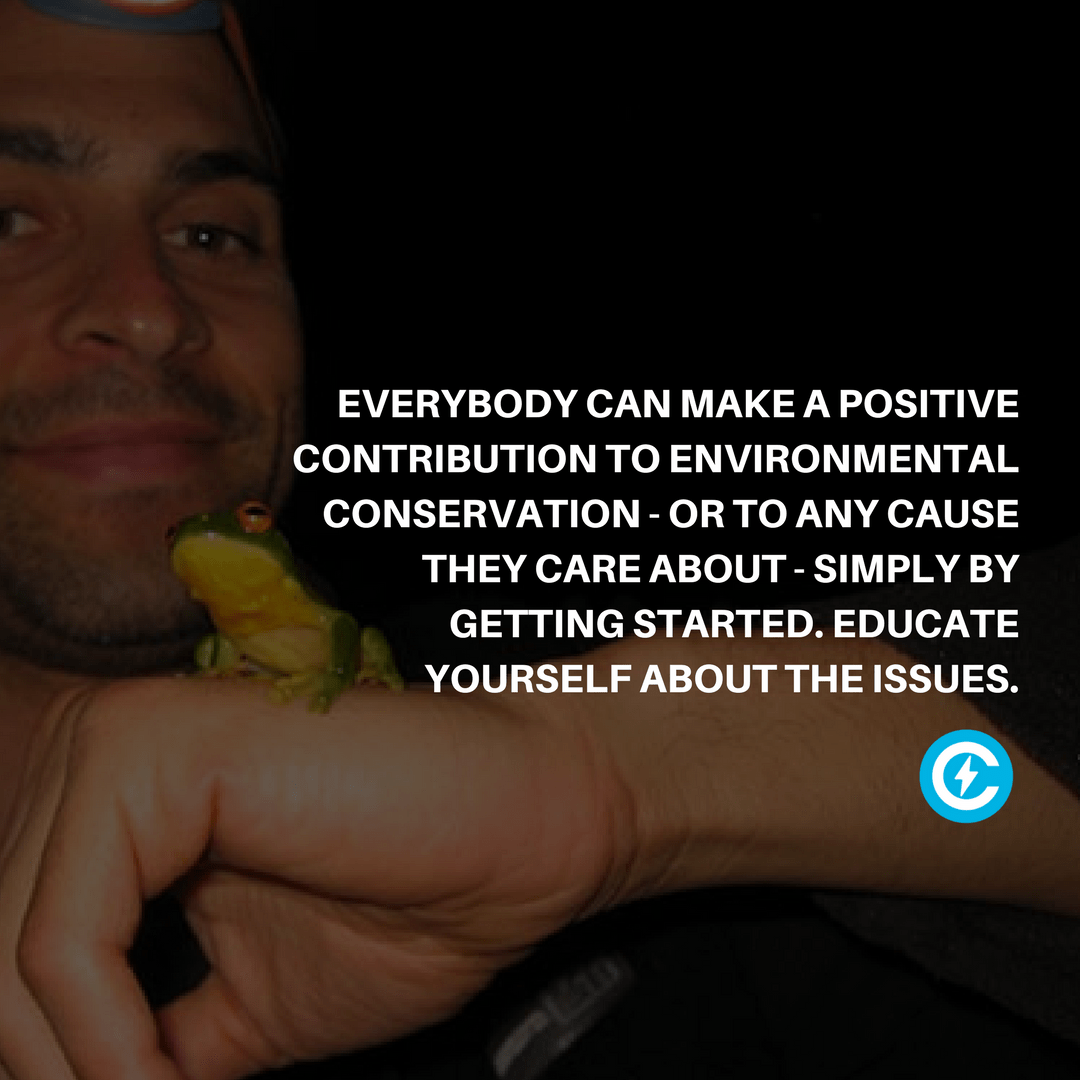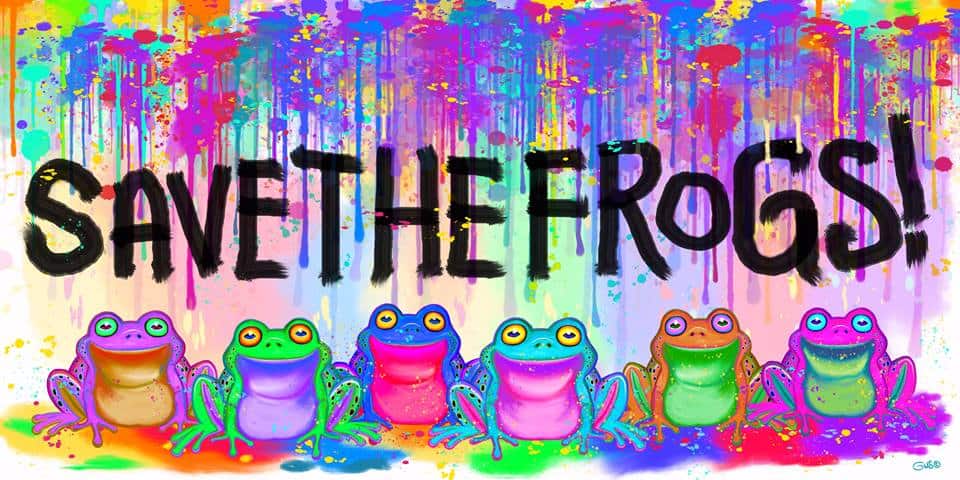SAVE THE FROGS! is a worldwide movement dedicated to protecting the world’s rapidly disappearing amphibian species. Founded in 2008, the organization’s international team of scientists, educators, policymakers and naturalists envision a world in wildlife are appreciated and protected.
Listen to more stories about inspiring nonprofits on our Charity Charge podcast.
Below is a Q&A with founder and CEO of Save The Frogs, Dr. Kerry Kriger.
Tell us a little bit about your history prior to working for Save The Frogs — how did your previous experiences prepare you for this journey?
I grew up in the suburbs of northern Virginia. When I was seven, my parents built a pond on the property. I spent a lot of time at the pond, and while I didn’t think much about frogs, I definitely would see them and hear them calling.
During my summers in high school, I spent a couple months in the wilderness with the National Outdoor Leadership School (NOLS). I grew a respect for nature and also learned skills that have enabled me to stay safe whether I’m climbing mountains or hiking up rainforest streams.
As I was always interested in science, but had never considered environmental science as a career, I studied mechanical engineering at the University of Virginia. Engineering gave me a solid grasp of mathematics, something many students lack in today’s computerized world.
Shortly before graduating with my engineering degree, I realized that there are actually people who get paid to spend time in the wilderness…environmental scientists.
This seemed a lot more interesting to me than engineering, so I sent letters (in the days before email) to every biology professor at the University of Hawaii and the University of Alaska. Only one wrote me back, but that was enough for me to spend a summer in Hawaii helping researchers investigate endangered birds.
I learned a lot about field biology and became set on doing a Ph.D. in environmental science. I spent the next five years working random jobs, studying music and traveling around the world. I taught myself Spanish in South America, a skill that has proven critical to our SAVE THE FROGS! Programs.
Learning a new language has enabled me to give presentations, teach courses and organize ecotours throughout Latin America, the hotspot of amphibian biodiversity and amphibian extinctions.
In 2002, I decided it was time to get my Environmental Science degree, so I started taking biology classes at the local community college to prepare for graduate school. To support myself, I decided to try my hand at private tutoring. I tutored math, science, Spanish, English, and SAT preparation, gaining significant experience in how to teach effectively.
To apply for graduate school, I had to find a professor willing to supervise me, and for this I needed to know what topic I would focus on in graduate school. I like spending time at streams, and I found out frogs were rapidly disappearing around the world.
I remembered a beautiful rainforest stream in Eungella National Park, Australia where there were a lot of frogs. I figured if I had to go back to school I should be in a place – a tropical place – where I would feel like I was traveling.
I googled Eungella Frogs and found a researcher who put me in touch with my eventual supervisor, Dr. Marc Hero at Griffith University in Gold Coast, Queensland, Australia. I spent four years researching frogs under Dr. Hero’s supervision and received as thorough an amphibian education as I can imagine possible.
After spending hundreds of nights in the rainforest experiencing frogs in their native habitats, I grew a true love of amphibians along with a strong desire to protect them.
What motivated you to start a nonprofit?
When I finished my Ph.D. research in Australia, I returned to the USA. I assumed I would get a postdoctoral research position at a university – the standard career path for amphibian biologists.
But when I thought about what the world of amphibian conservation needed most, and therefore what my greatest contribution would be, I realized that what was missing was a nonprofit organization dedicated exclusively to protecting amphibian populations.
There was no organization dedicated to educating the public about amphibians, or to protecting amphibian habitats. I had won a couple large grants during my graduate school years and assumed I would be able to raise money for frog conservation if I had a formalized nonprofit organization. I had never worked for or volunteered for a nonprofit before – I just knew I needed to start a nonprofit, so one day I pulled out a pad of paper and started writing down ideas.
I bought a book on how to form a nonprofit, read a thousand page book on how to build a website, and designed a Frogs of Australia poster so I would have a product to sell when the website launched. That was in 2008. Now we have volunteers, staff and chapters around the world.

What are you hoping to achieve with your work at the Save The Frogs? Are there any relevant facts or statistics you can share with us?
Over one-third of the world’s 7,628 amphibian species are threatened with extinction, and at least 200 species have gone completely extinct in recent decades – a rate several thousand times faster than is natural.

Since 2008, SAVE THE FROGS! has organized over 1,900 educational events in 60+ countries. We have built or restored 29 wetlands in the southwest USA, and we have gotten legislative actions in place at the local, state and federal level to protect amphibian populations.
What are some of the most challenging obstacles you have had to face in pursuit of your goals?
As much as my environmental science background prepared me for understanding the threats to amphibians and how to educate people about them, I had never taken courses in business, nonprofit management, fundraising or any of the multitude of skills required to run a successful worldwide organization. I have had to learn all this as I go.
With respect to saving the frogs and changing people’s mindsets, the largest obstacles are from bureaucratic government agencies and from corporations who place profits above all else and refuse to improve their environmental practices.

What advice would you give to people who are eager to make a social impact but don’t know where to begin?
Everybody can make a positive contribution to environmental conservation – or to any cause they care about – simply by getting started. Educate yourself about the issues. Connect with the people and organizations who are already working on the issues of interest to you. Volunteer. Get creative. But most of all take action.
If you are interested in amphibians, the place to start is www.savethefrogs.com, where we have over a thousand pages of freely accessible information on amphibians, including pages on how to help, how to spread the word, and how teachers and students can get their schools and universities involved.
Feel free to write us at contact@savethefrogs.com with any questions, and please connect with us on your favorite social media channel by searching for SAVE THE FROGS!.

